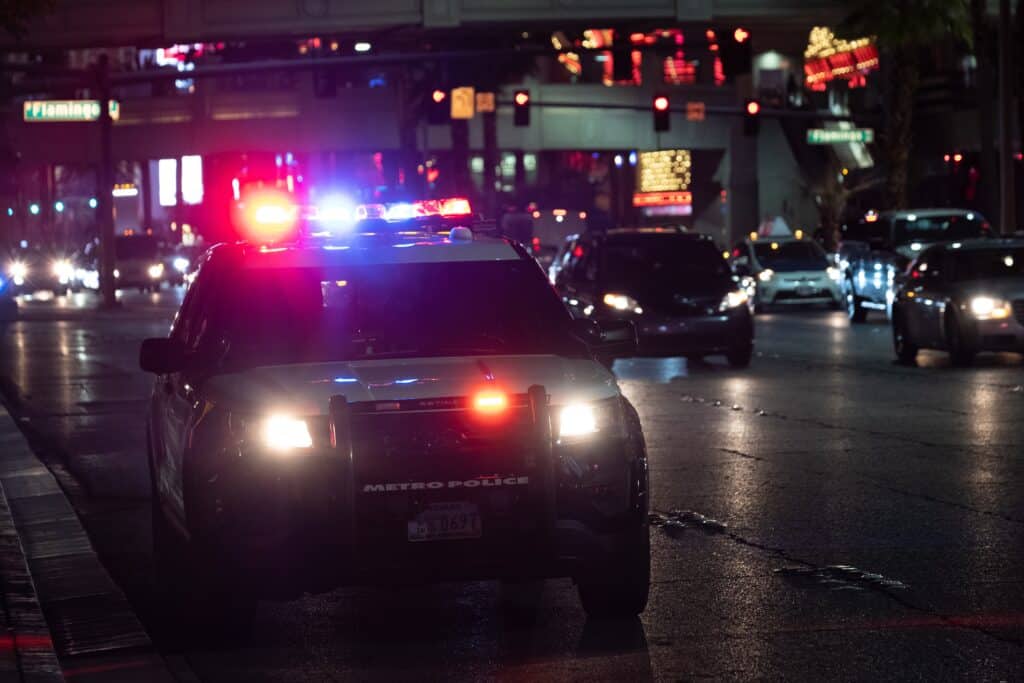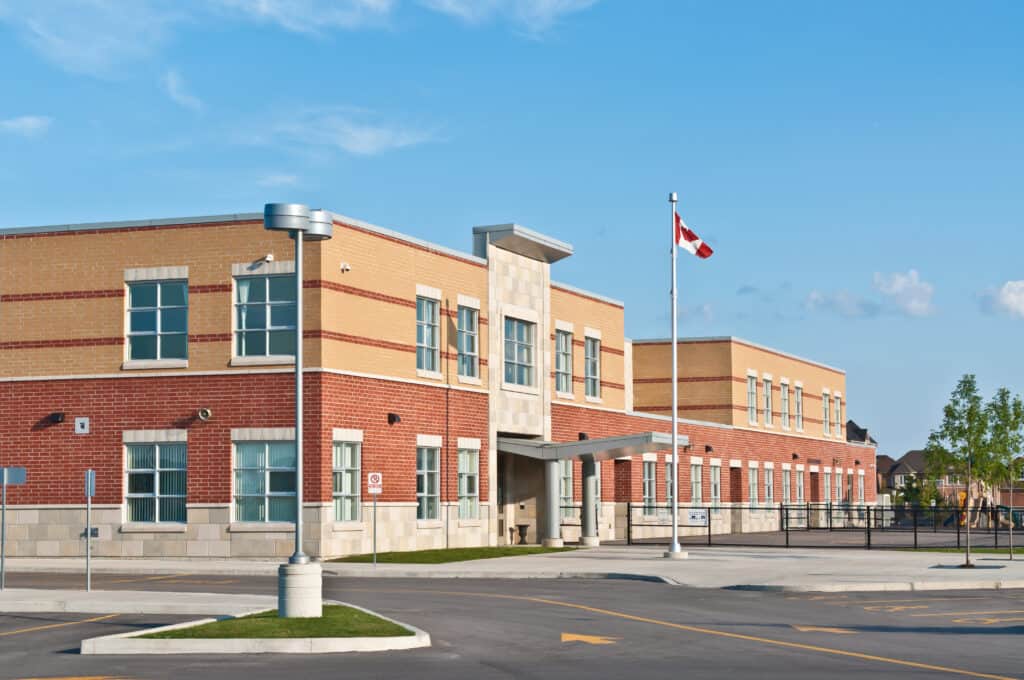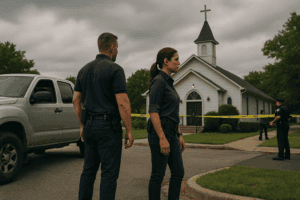An effective strategy for school security revolves around the creation of multiple layers of security – a series of individual barriers and deterrents against threats. The concept involves having numerous levels of security working from the outside of the property inward. This enhances the chances of deterring or delaying intruders sufficiently to allow for intervention by emergency services. It is vital that your security team collaborates closely with local law enforcement and fire departments to ascertain the suitable and safe security layers for your school.
Layer 1: Public Street and Curb
The initial layer of school security focuses on the public streets and curbs surrounding the campus. This border should be easily visible, marked by boundaries such as sidewalks, hedges, or low fences. To maintain a secure perimeter, it is essential to keep these physical barriers in good condition. This includes trimming bushes to no taller than 3 feet and pruning trees to no lower than 8 feet, and using anti-scale fencing. The goal of this layer is to maintain public visibility and eliminate any potential hiding spots for unauthorized individuals.
In addition to maintaining physical boundaries, it’s crucial to pay attention to the flow of traffic in and out of the school grounds. Investing in secure and strategically placed sidewalks, driveways, and crosswalks will aid in achieving a safer traffic flow. Moreover, strategically positioned signage and carefully implemented drop-off and pick-up procedures can significantly improve the safety of students, staff, and visitors.
Implementing this layer of security is not enough on its own; it requires constant vigilance and attention from school personnel and the security team. Regular assessment of the perimeter must be carried out, and any damaged barriers or obstructions should be fixed promptly. The maintenance of a clear and well-defined perimeter serves as a strong deterrent for potential intruders and ensures that any suspicious activity can be easily identified and reported to the appropriate authorities.
Layer 2: Public Parking and Visitor Parking
The second layer of security in a school focuses on public parking and visitor parking areas. It is essential to designate specific zones for the public and visitors to the school, ensuring that their presence is both monitored and controlled. This layer contributes to a safer environment by limiting unauthorized access to school grounds and maintaining a clear view of all vehicles entering and leaving the premises.
One approach to establishing this layer is utilizing signs or physical barriers to mark visitor parking areas. It is crucial to pay attention to the visual elements of these zones, ensuring that lines of sight remain clear and potential hiding spots are minimized. For instance, maintaining well-lit parking spaces and avoiding visual obstructions from shrubs or large objects can help improve visibility and security.
Additionally, the implementation of a registration system for vehicles entering the parking areas can help increase control over the premises. This may involve the use of stickers or hangtags that identify authorized visitors or staff members. An electronic gate system or parking attendant can assist in enforcing these measures and ensuring compliance, reducing the likelihood of unauthorized vehicles entering the school grounds.
Lastly, the placement of security cameras in public and visitor parking areas can further augment the effectiveness of this layer. Surveillance cameras should be conspicuous and cover all access points, contributing to the deterrence and detection of potential intruders. Assigned school staff should periodically review camera footage and ensure that the coverage is comprehensive and effective, thereby making this layer an essential component of a secure school environment.
Layer 3: Restricted Staff and Student Parking
This layer of the school security system is focused on the parking areas reserved exclusively for staff and students. Providing separate parking areas for staff and students can enhance school safety by controlling access and ensuring that only authorized individuals are permitted to enter the premises. To achieve this, it’s crucial to require visible identification, such as a sticker or hangtag, for all vehicles parked in these designated spaces.
Designating specific areas for staff and student parking helps school districts maintain a secure campus environment. It minimizes the risk of unauthorized outsiders gaining access to the school grounds through unmonitored entry points. Implementing clear signage, along with gates or barriers that restrict access, can further deter potential intruders from trespassing.
In addition to controlling access, school safety efforts should also focus on the efficient and secure management of these parking areas. One effective approach is assigning parking monitors or utilizing automated gate systems to oversee proper usage and maintain order. These measures ensure that designated parking spaces are used responsibly and eliminate opportunities for unauthorized entry or suspicious activity.
Considering the range of vehicles that may enter school premises, it is also essential to have a plan in place for managing deliveries. It’s necessary to reserve specific parking spots for delivery vehicles and to clearly label these spaces. This planning helps school staff monitor and regulate the flow of external traffic coming onto the campus.
By providing restricted parking for staff and students and effectively managing access to these areas, schools can enhance the overall safety and security of their campus. Implementing these preventive measures not only protects students and teachers but also contributes to creating a more secure learning environment for everyone.
Layer 4: Enclosed School Grounds and Sidewalk
The fourth layer of school security encompasses the enclosed school grounds and sidewalks. It includes the walkways, playgrounds, and green areas within the school premises. Maintaining a secure environment in this layer requires diligent maintenance, surveillance, and access control.
To keep campuses safe and secure, schools should invest in proper fencing or walls to define the boundary of the enclosed school grounds. Access points should be limited and monitored to control entry for authorized personnel and visitors. Schools can consider applying for grants to fund these security enhancements, as many organizations and government agencies offer resources for school safety initiatives.
Surveillance cameras should be installed to monitor the grounds and sidewalks with clear lines of sight. Regularly patrolled by security staff, it can be useful for deterring potential threats and ensuring that students, faculty, and staff can safely navigate the campus.
Lighting plays a crucial role in maintaining safety as well. Adequate and well-maintained lighting helps prevent accidents and discourages unauthorized activities after hours. It keeps the grounds visible and clear for anyone traversing the premises during nighttime events or activities.
Implementing emergency call stations or panic alarm systems around the school grounds can provide an added layer of safety. These systems help students and staff report incidents or call for help when necessary. Designated areas for assembly during emergency situations, along with well-established protocols and regular drills, contribute to preparedness and orderly response in case of emergencies.
Finally, maintaining the cleanliness and orderliness of the enclosed school grounds and sidewalks is essential. Well-maintained common areas not only facilitate the ease of movement around the school but also create a positive learning environment. By allocating ample resources for campus upkeep and proactively addressing any issues, schools can ensure a secure and welcoming atmosphere for everyone on the premises.
Layer 5: Secure Building Entrances
Secure building entrances are an indispensable part of the multi-layered school security strategy. This layer encompasses all entry points into the school building, including main entrances, side doors, and emergency exits. Effective security measures at this layer should provide a balance between accessibility and protection.
One essential element of secure building entrances is access control. This can be achieved through the implementation of electronic access control systems, such as key card readers or keypad locks. These systems help ensure that only authorized individuals, such as staff and students, can enter the building. Incorporating visual and audio communication devices, like intercoms and video cameras, enables school personnel to identify and screen visitors before allowing them entry.
Perimeter doors should have heavy-duty door hardware, including locks and strike plates, to delay or deter forced entry attempts by intruders. In addition, all entrances should be well-lit, enhancing visibility and discouraging unauthorized individuals from attempting to gain access.
Another important aspect of secure building entrances is the clear demarcation between public and private spaces. A secure lobby or vestibule area can serve as a buffer zone, allowing school staff to screen visitors while preventing them from gaining immediate access to classrooms and other critical areas of the school. Visitor check-in procedures, including the issuance of temporary identification badges, should be strictly enforced to maintain a controlled environment.
In conclusion, secure building entrances form a critical layer of protection in a comprehensive school security approach. By incorporating access control measures, robust door hardware, and well-defined public/private spaces, schools can strengthen their protection against potential threats while maintaining a welcoming environment for students, staff, and visitors.
Layer 6: Interior Security Measures
The final layer involves implementing various security measures within the school building itself. These measures include secure interior doors, lockable classrooms and hallways, and effective alarm systems. The goal is to create a safe and secure environment for both students and faculty.
To enhance interior security, schools may adopt practices such as utilizing safety and security-specific classroom doors. These doors serve as the last and most crucial layer of protection against intruders. Additionally, measures to control access points, such as key card systems or biometric scanners, can limit unauthorized entry.
Another essential aspect of interior security is conducting regular drills with students and faculty. This ensures that everyone knows how to respond to various emergency situations. Drills include fire, tornado, and active shooter scenarios. These activities help to build a culture of safety, awareness, and quick response.
Communication is crucial in maintaining effective interior security measures. The school administration should work closely with local law enforcement, fire departments, and other emergency services to ensure the coordination between school security and external agencies. Regular meetings and dialogues can facilitate this collaboration and lead to improved security measures. Schools should also enlist the help of trained experts in assessing their current security infrastructure and procedures, and make necessary improvements.
In conclusion, having a multi-layered security approach, including robust interior security measures, can greatly enhance the overall safety and security of a school. By implementing this approach, schools can provide a safe environment for students and faculty, deter potential intruders, and demonstrate a strong commitment to the well-being of all members of the school community.
Cooperation with Local Law Enforcement and Emergency Services

A crucial aspect of enhancing school security is working closely with local law enforcement and emergency services to establish effective communication and training procedures. Cooperation between the school security team and these entities is imperative to ensure that all security measures implemented are suitable and conform to safety guidelines.
One key area of collaboration is the development of joint training programs for both security staff and emergency personnel. This may include drills, workshops, and exercises that focus on providing a clear understanding of each entity’s roles and responsibilities during incidents. Comprehensive training equips security staff with the ability to respond effectively to various scenarios while fostering enhanced communication between all parties involved.
Another focal point is establishing a robust communication system that facilitates efficient information sharing among school security staff, law enforcement, and emergency services. Reliable and timely communication plays a vital role in coordinating proper responses to incidents. Implementing advanced technologies such as radio systems and emergency notification tools can help bridge the communication gap and provide real-time updates, allowing all parties to work together seamlessly.
Local law enforcement agencies may also offer guidance and support in developing effective threat assessment methodologies to identify and mitigate potential security risks. Collaborating with local authorities to conduct regular security audits enables the school to be proactive in finding gaps in its security strategies and making necessary adjustments.
In summary, cooperation with local law enforcement and emergency services is essential to ensure a multi-layered, comprehensive approach to school security. Investing in a strong relationship with these entities through effective communication, joint training, and regular security audits fosters a safer and more secure learning environment for both students and the school community.
Frequently Asked Questions
What measures should be taken for public area visibility near schools?
It is essential to take preventive measures to maintain public area visibility near schools. This includes trimming bushes and pruning trees to CPTED, and using appropriate fences to prevent potential hiding spots, mitigate unauthorized access, and maintain natural surveillance.
How can restricted parking for staff and students enhance school security?
Restricted parking for staff and students enhances school security by allowing only authorized individuals with visible identification, such as a sticker or hangtag, to park within designated areas. Implementing signage and gates to enforce restricted parking can further minimize the risk of unauthorized persons entering the school premises.
What role does landscaping play in school grounds safety?
Landscaping plays a crucial role in school grounds safety by helping maintain clear lines of sight and eliminating potential hiding spots. Trees and bushes should be pruned, and grass should be kept short to ensure visibility. Moreover, landscaping features such as fences or walls can act as physical barriers against unauthorized access to the school grounds.
How can a single entry point for visitors aid in maintaining security?
A single entry point for visitors helps in maintaining security by allowing school personnel to monitor and control the access of individuals entering and exiting the school premises. Visitor check-in procedures can be implemented at this entry point to verify identities and ensure that only authorized guests are allowed access.
What strategies can be appropriated to reinforce windows and glass doors?
To reinforce windows and glass doors, schools can consider using security film, laminate, or tempered glass to make them more resistant to breakage or forced entry attempts. Additionally, ensuring that windows are properly locked and implementing other measures, such as security bars or grates, can further strengthen their resistance.
How can interior door locking systems prevent unauthorized access within schools?
Interior door-locking systems provide an additional layer of security by preventing unauthorized access to individual classrooms and hallways. These systems can include mechanical locks, electronic access control systems, or magnetic locks that can be controlled and monitored by the school’s security team. They serve as a critical barrier for intruders, providing extra time for emergency response and increasing overall safety in the school.






